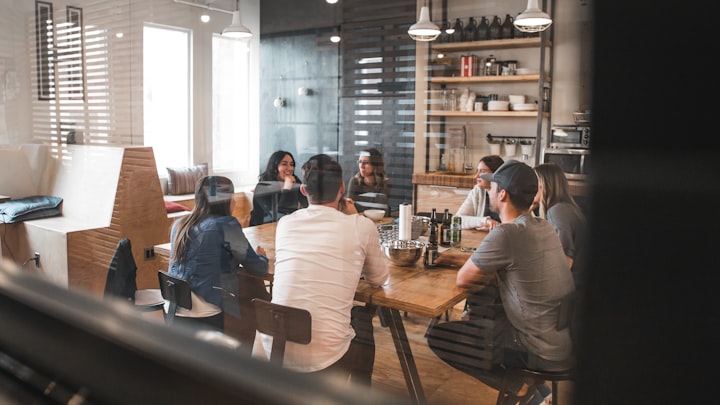Office interior design and employee mobility
can corporate office interior design support employee mobility
Corporate office interior design plays a crucial role in supporting employee mobility, which is an essential aspect of modern workplaces. A well-designed office space can provide employees with the freedom and flexibility they need to move around and collaborate, leading to increased productivity and job satisfaction. Here are some ways in which corporate office interior design can support employee mobility:
Open and flexible spaces
One of the most significant ways in which office interior design can support employee mobility is by creating open and flexible spaces. Traditional office layouts with cubicles and enclosed offices can restrict movement and hinder collaboration. Instead, an open layout with flexible workstations, movable partitions, and multifunctional spaces can allow employees to move around freely and interact with their colleagues. Such spaces can also be adapted easily to accommodate different work styles and changing needs, ensuring that employees can work comfortably and efficiently.
Collaborative spaces
Collaboration is an essential aspect of modern workplaces, and corporate office interior design can support it by creating collaborative spaces. These spaces can include conference rooms, meeting areas, and informal breakout spaces that encourage teamwork, brainstorming, and knowledge sharing. When designing these spaces, it's essential to consider the size, layout, and furniture to ensure they meet the needs of different groups and teams. Collaborative spaces should also be located strategically throughout the office to encourage movement and interaction.
Ergonomic furniture
Ergonomic furniture can play a significant role in supporting employee mobility. Chairs, desks, and other furniture should be designed to promote movement and comfort, allowing employees to switch between standing and sitting positions throughout the day. Adjustable-height desks, comfortable chairs, and footrests can also reduce the risk of musculoskeletal disorders and improve overall employee well-being. Moreover, lightweight and movable furniture can allow employees to rearrange their workspace easily and collaborate with others.
Natural light and greenery
Natural light and greenery can have a significant impact on employee well-being and productivity. Incorporating large windows, skylights, and glass partitions can bring natural light into the office, which has been shown to enhance mood and energy levels. Plants and greenery can also improve air quality, reduce stress levels, and boost creativity. When designing the office space, it's essential to consider the placement of windows and greenery to ensure they maximize natural light and create a calming and inviting atmosphere.
Technology integration
Technology has revolutionized the way we work, and corporate office interior design can support employee mobility by integrating the latest technology. Wireless connectivity, smart devices, and video conferencing can enable employees to work from anywhere in the office and collaborate with colleagues across the globe. Moreover, digital signage, interactive screens, and mobile applications can provide employees with real-time information and enable them to navigate the office easily.
In conclusion, corporate office interior design plays a crucial role in supporting employee mobility. By creating open and flexible spaces, incorporating collaborative areas, providing ergonomic furniture, incorporating natural light and greenery, and integrating technology, offices can encourage movement and collaboration, leading to increased productivity and job satisfaction.
Breakout areas
Breakout areas are designated spaces within the office that are intended for relaxation and socializing. They are an excellent way to encourage employees to take breaks, recharge, and socialize with their colleagues. These areas can include comfortable seating, tables for playing games or having lunch, and even coffee stations. By creating spaces where employees can step away from their desks and recharge, you can support their overall well-being and encourage movement throughout the day.
Multipurpose spaces
Multipurpose spaces are designed to serve more than one purpose, making them an excellent way to support employee mobility. For example, a space that can be used as a conference room during the day can transform into an event space in the evening. These flexible spaces can be adapted to meet the changing needs of the office and can encourage movement and collaboration throughout the day.
Wayfinding and signage
A well-designed wayfinding system can help employees navigate the office quickly and easily, reducing stress and improving their overall experience. Wayfinding includes directional signage, maps, and other visual cues that guide people through the office. By making it easy for employees to find their way around, you can encourage movement and make it more comfortable for people to explore different parts of the office.
Color and texture
Color and texture can have a significant impact on the mood and energy levels of employees. Bright, vibrant colors can create a sense of energy and excitement, while more muted tones can create a calming and peaceful atmosphere. Texture can also be used to create a more inviting and comfortable space. Soft materials like carpet, upholstery, and curtains can create a sense of warmth and coziness, while hard materials like metal and glass can create a sense of modernity and sophistication.
Storage solutions
A cluttered workspace can make it difficult for employees to move around and collaborate. By providing ample storage solutions, such as shelving, cabinets, and lockers, you can encourage employees to keep their workspace organized and clutter-free. This can create a more comfortable and inviting environment and make it easier for employees to move around and collaborate with their colleagues.
In summary, there are many ways that corporate office interior design can support employee mobility. By creating open and flexible spaces, incorporating collaborative areas, providing ergonomic furniture, integrating technology, and incorporating natural light, greenery, wayfinding, color, texture, multipurpose spaces, and storage solutions, you can create a workspace that encourages movement and collaboration, leading to increased productivity and job satisfaction.






Comments
There are no comments for this story
Be the first to respond and start the conversation.